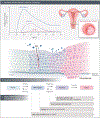The IARC Perspective on Cervical Cancer Screening
- PMID: 34758259
- PMCID: PMC12125667
- DOI: 10.1056/NEJMsr2030640
The IARC Perspective on Cervical Cancer Screening
Figures


Comment in
-
The IARC Perspective on Cervical Cancer Screening.N Engl J Med. 2022 Feb 10;386(6):607. doi: 10.1056/NEJMc2119177. N Engl J Med. 2022. PMID: 35139284 No abstract available.
References
-
- Cervix cancer screening. IARC handbooks of cancer prevention. Vol. 10. Lyon, France: International Agency for Research on Cancer, 2005. (https://publications.iarc.fr/380).
-
- WHO guideline for screening and treatment of cervical precancer lesions for cervical cancer prevention. Geneva: World Health Organization, 2021. - PubMed
-
- Preamble for secondary prevention. IARC handbooks of cancer prevention. Lyon, France: International Agency for Research on Cancer, 2019. (https://handbooks.iarc.fr/docs/HB-Preamble-Secondary-Prevention.pdf).
-
- Global cancer observatory. Lyon, France: International Agency for Research on Cancer, 2018. (https://gco.iarc.fr/).
Publication types
MeSH terms
Grants and funding
LinkOut - more resources
Full Text Sources
Other Literature Sources
Medical
